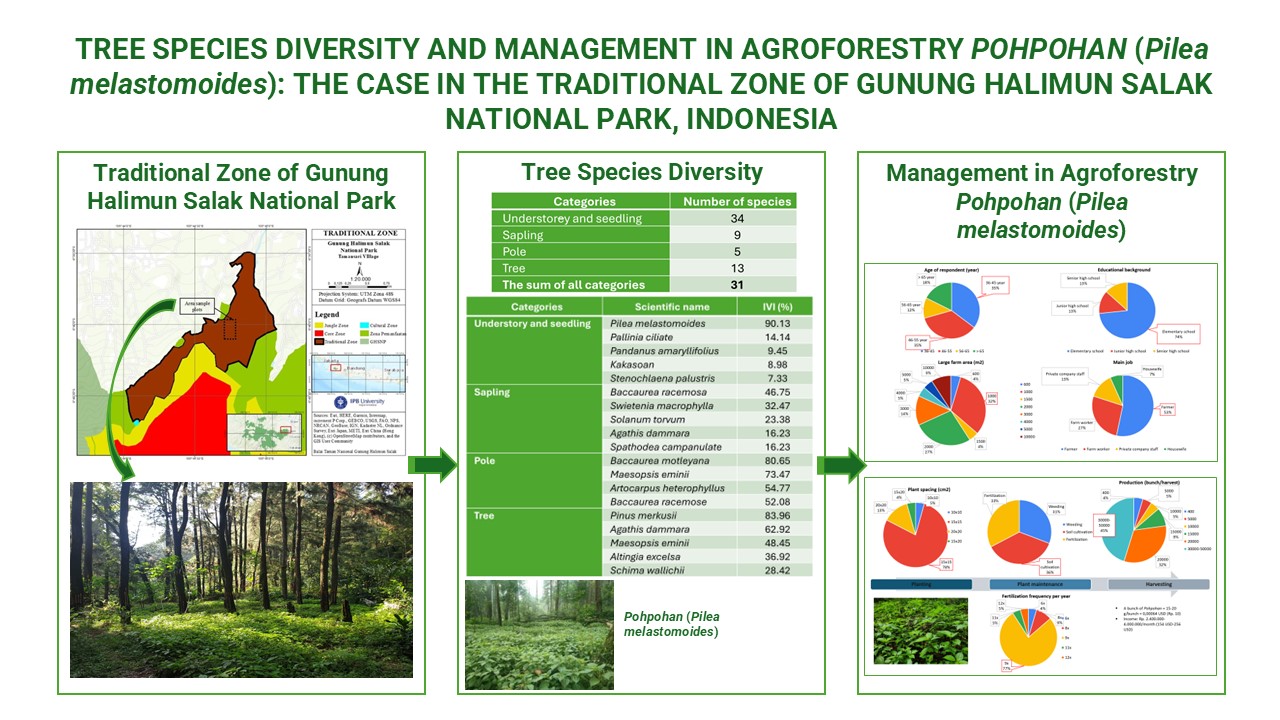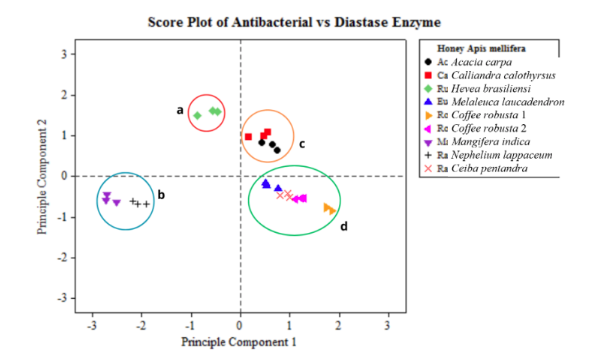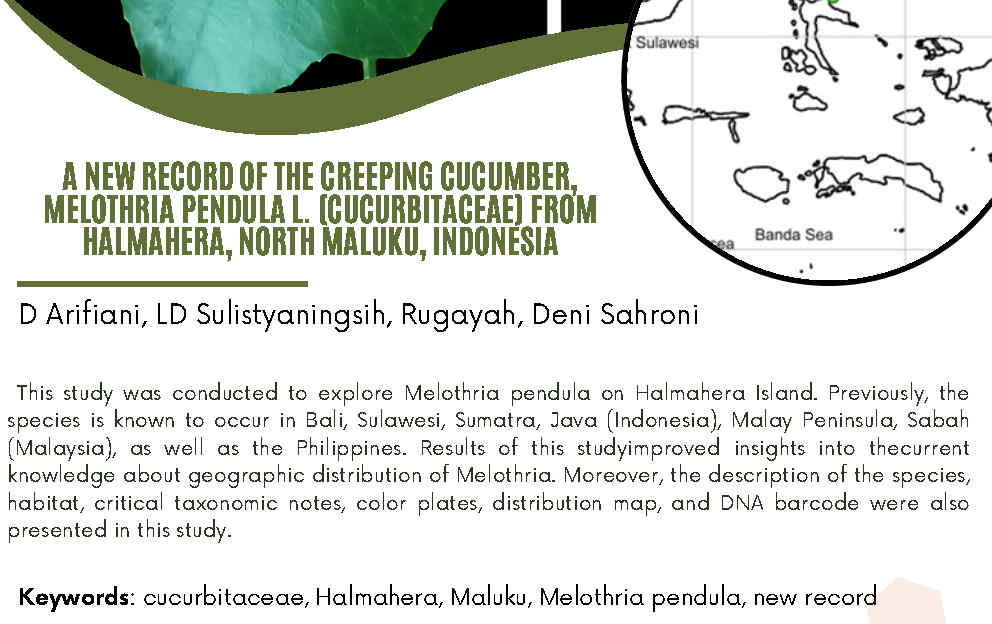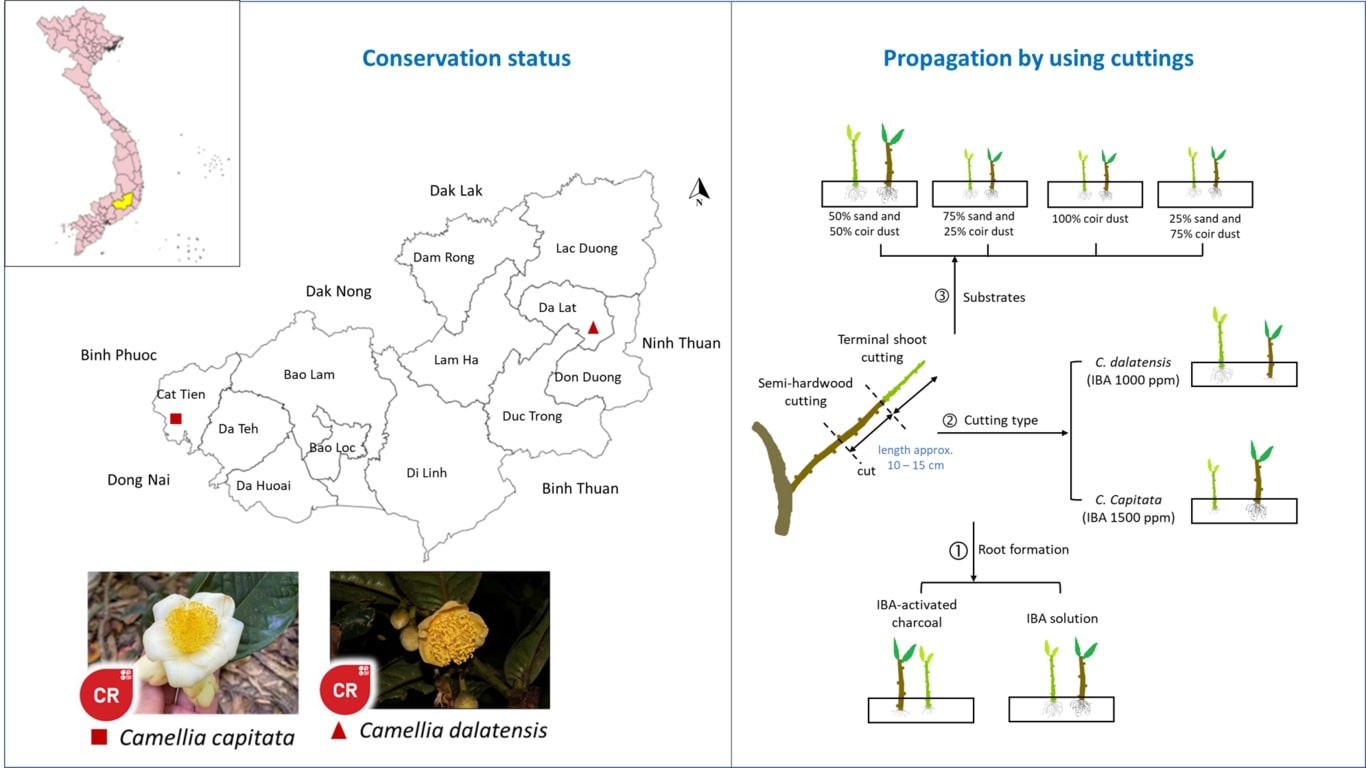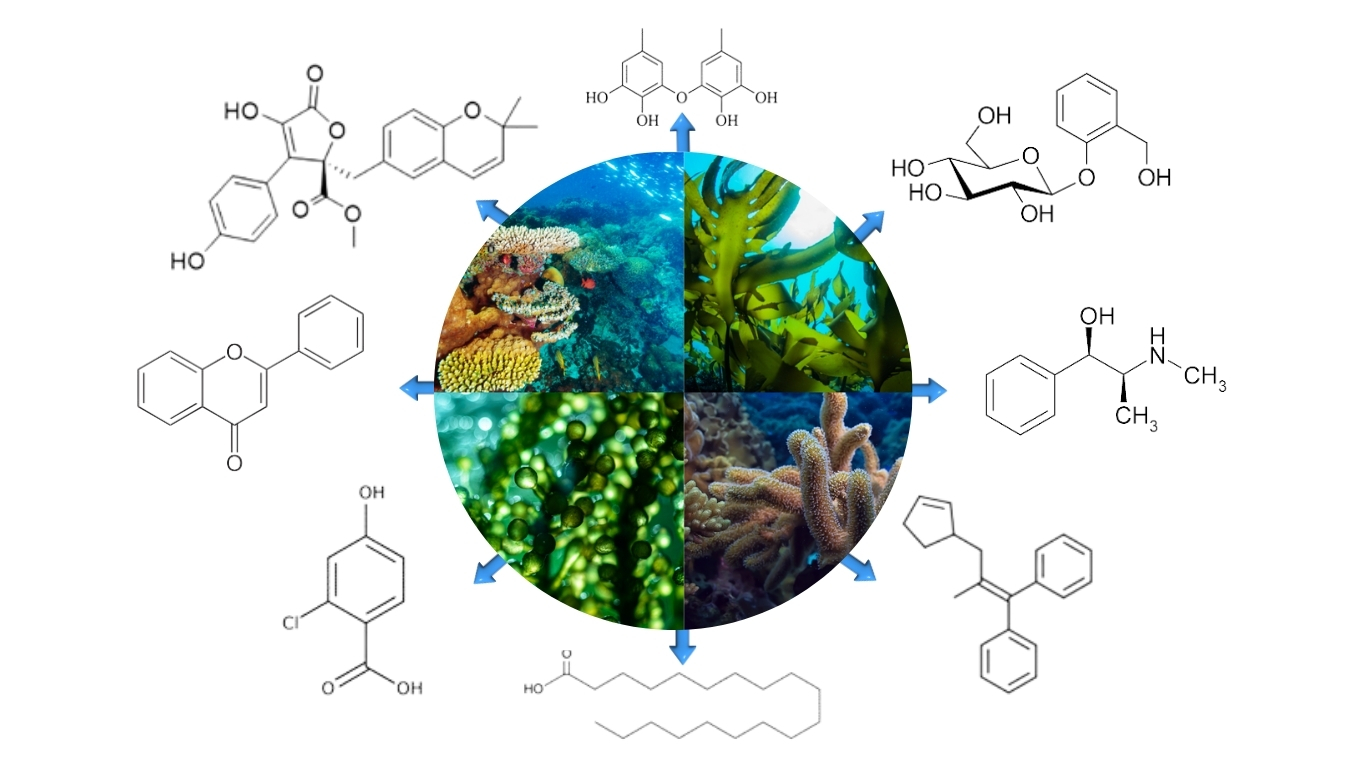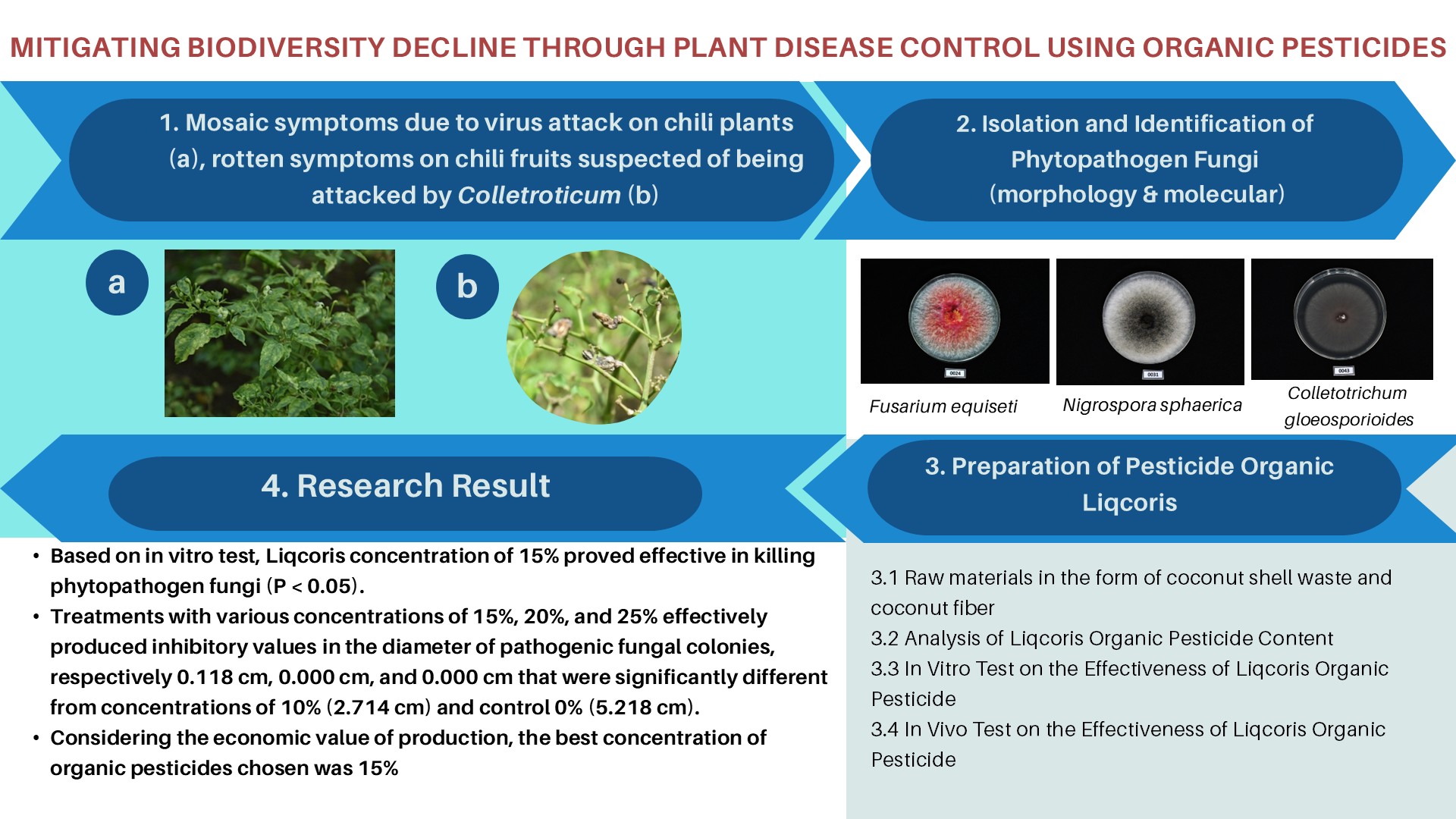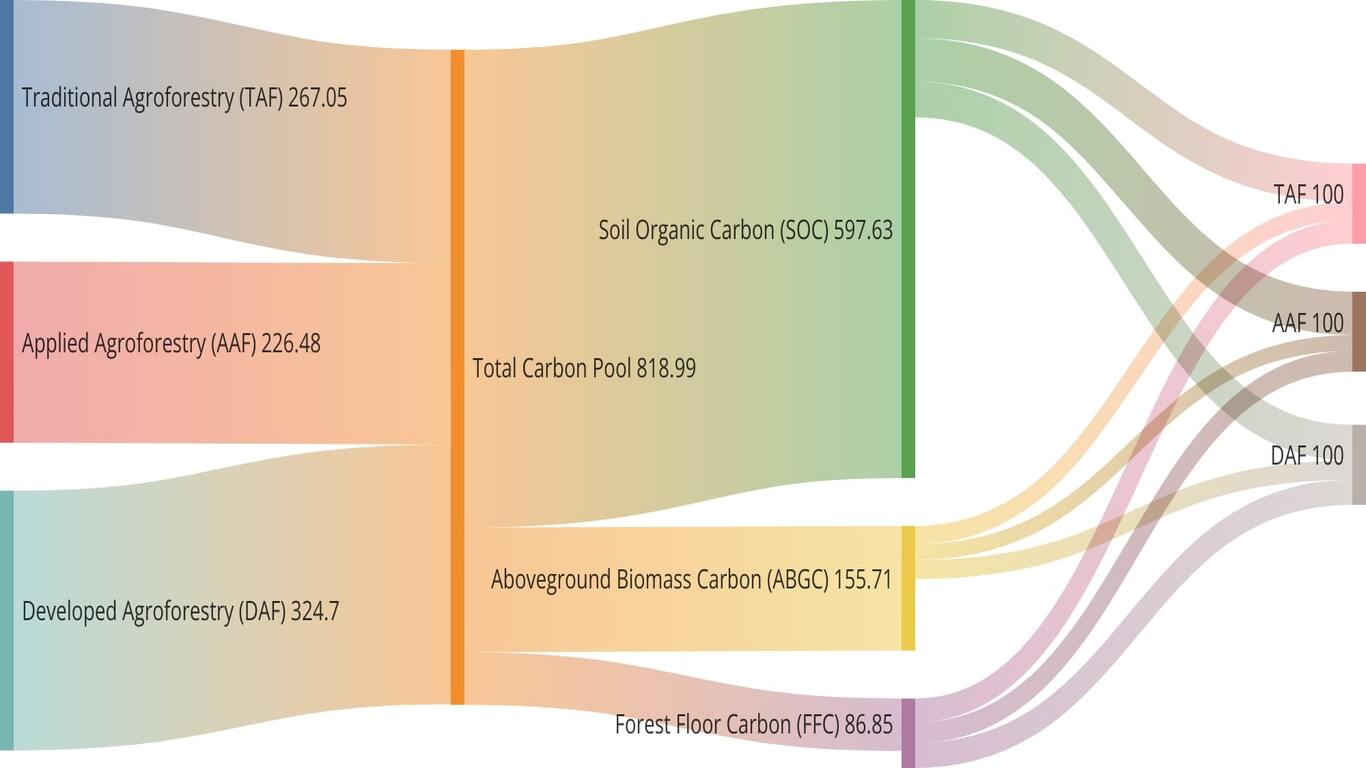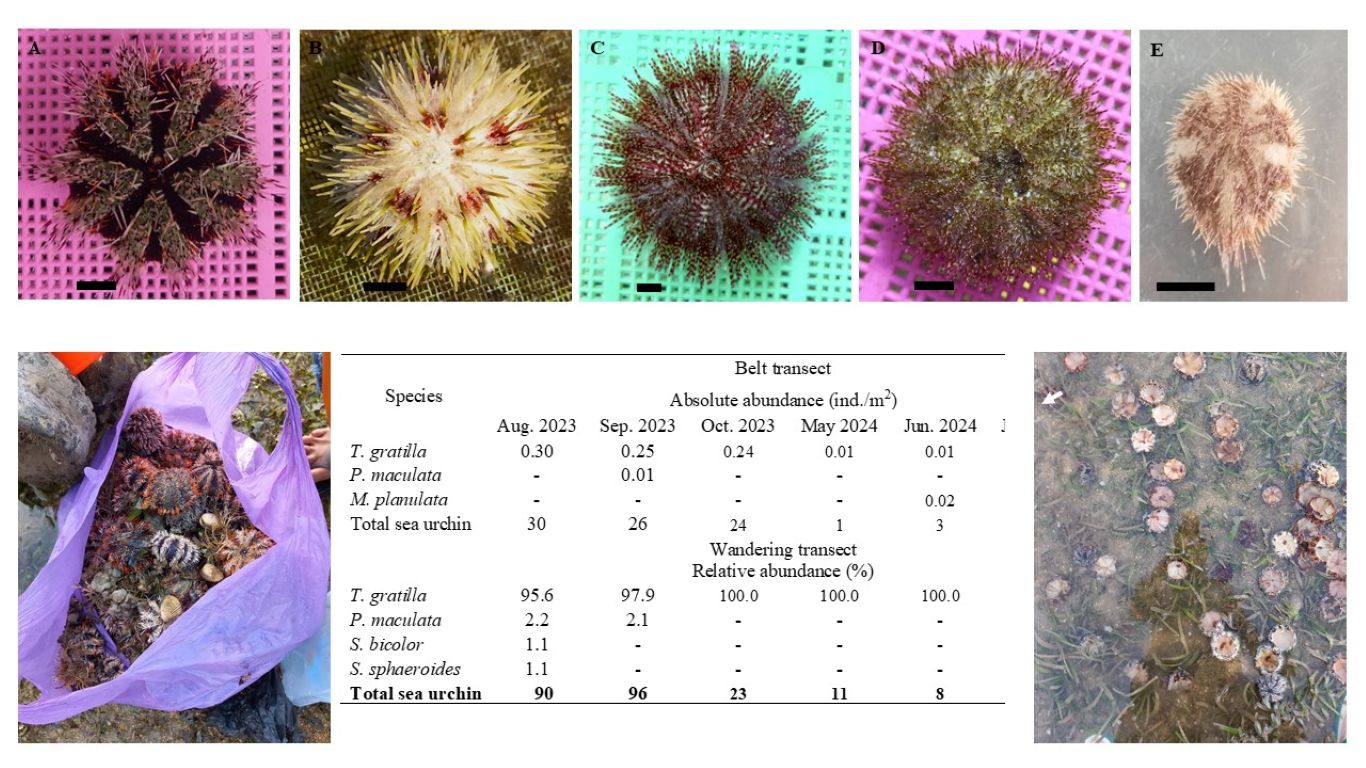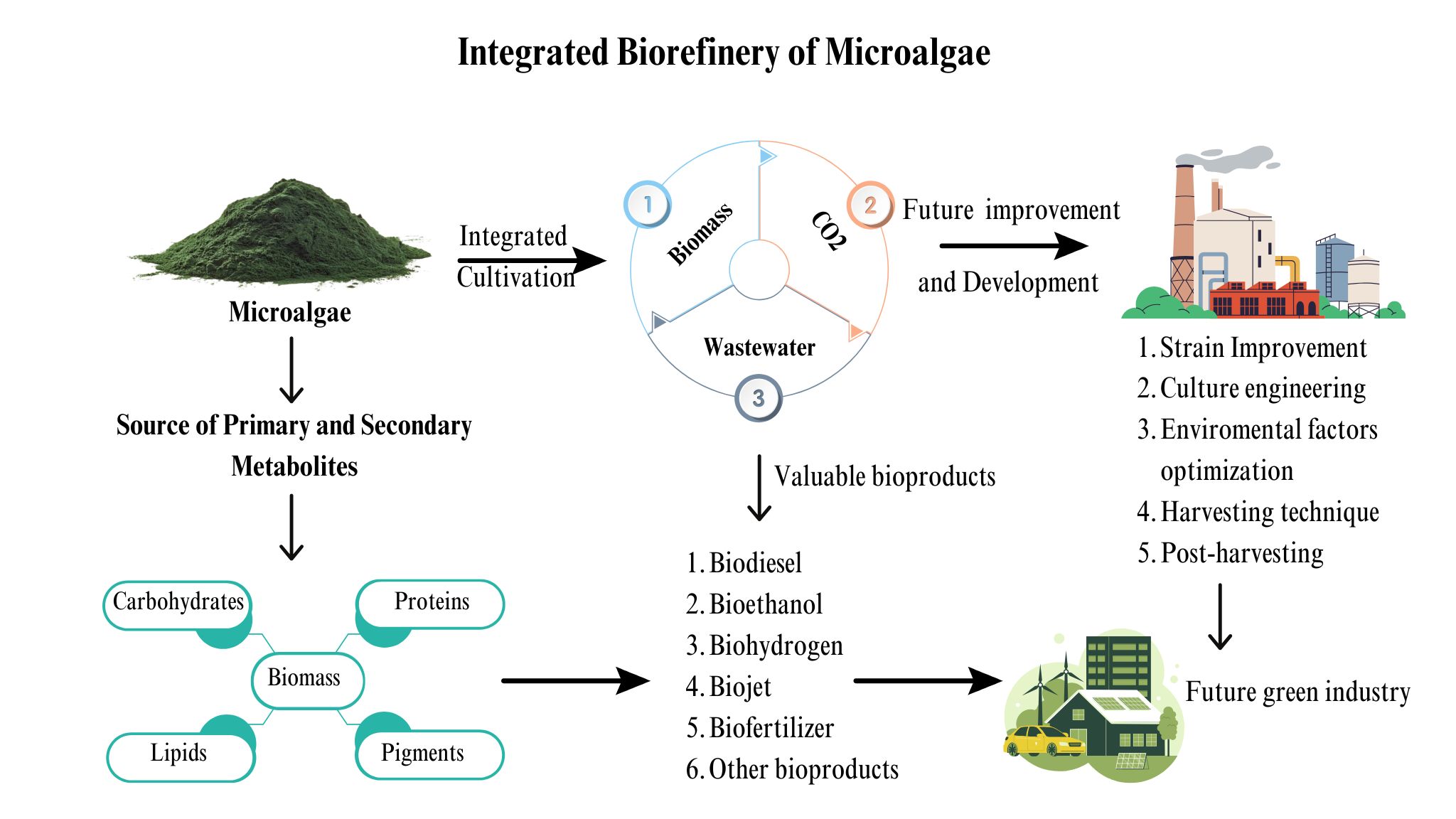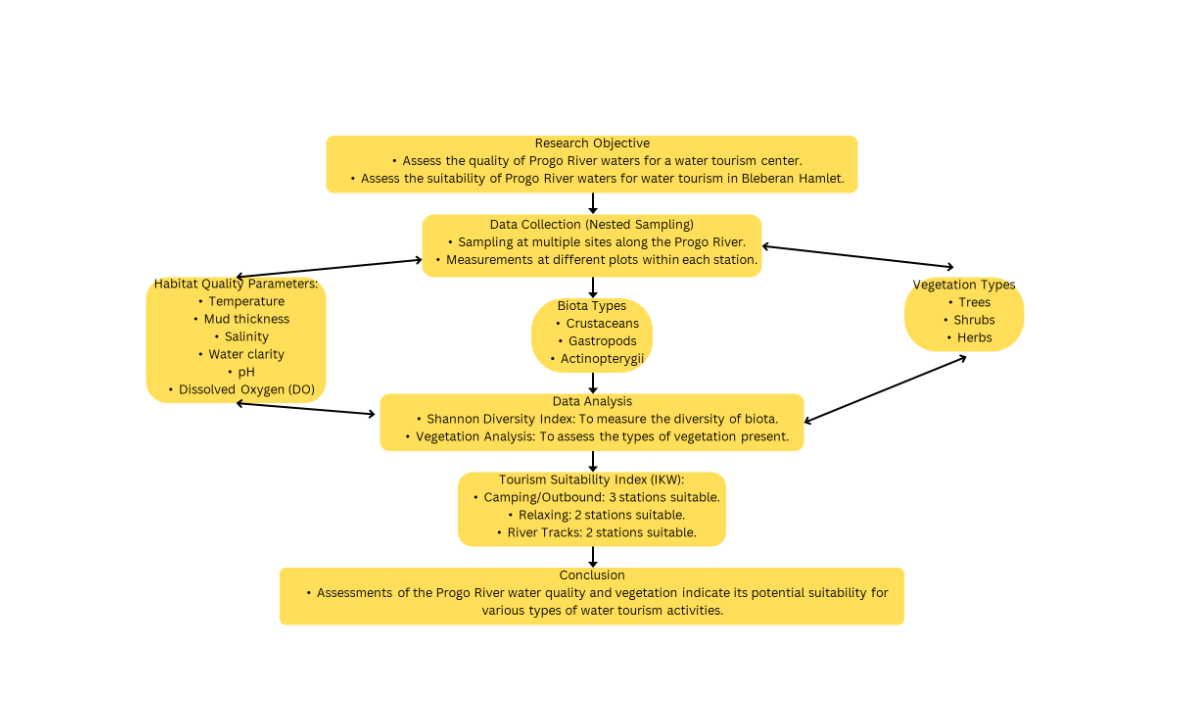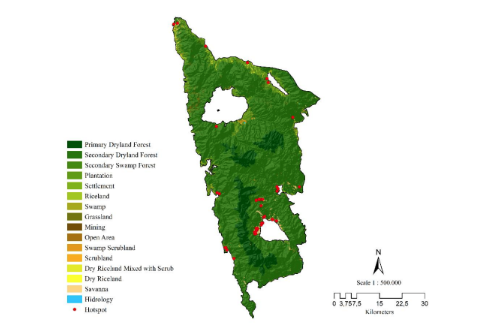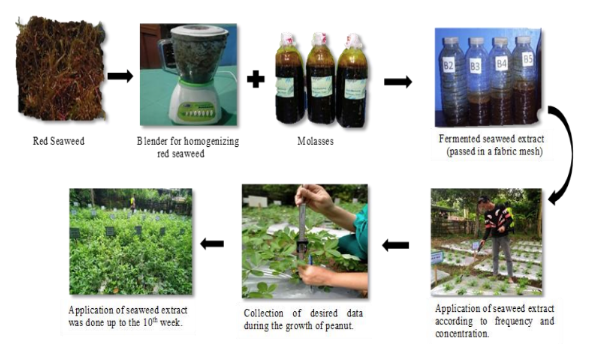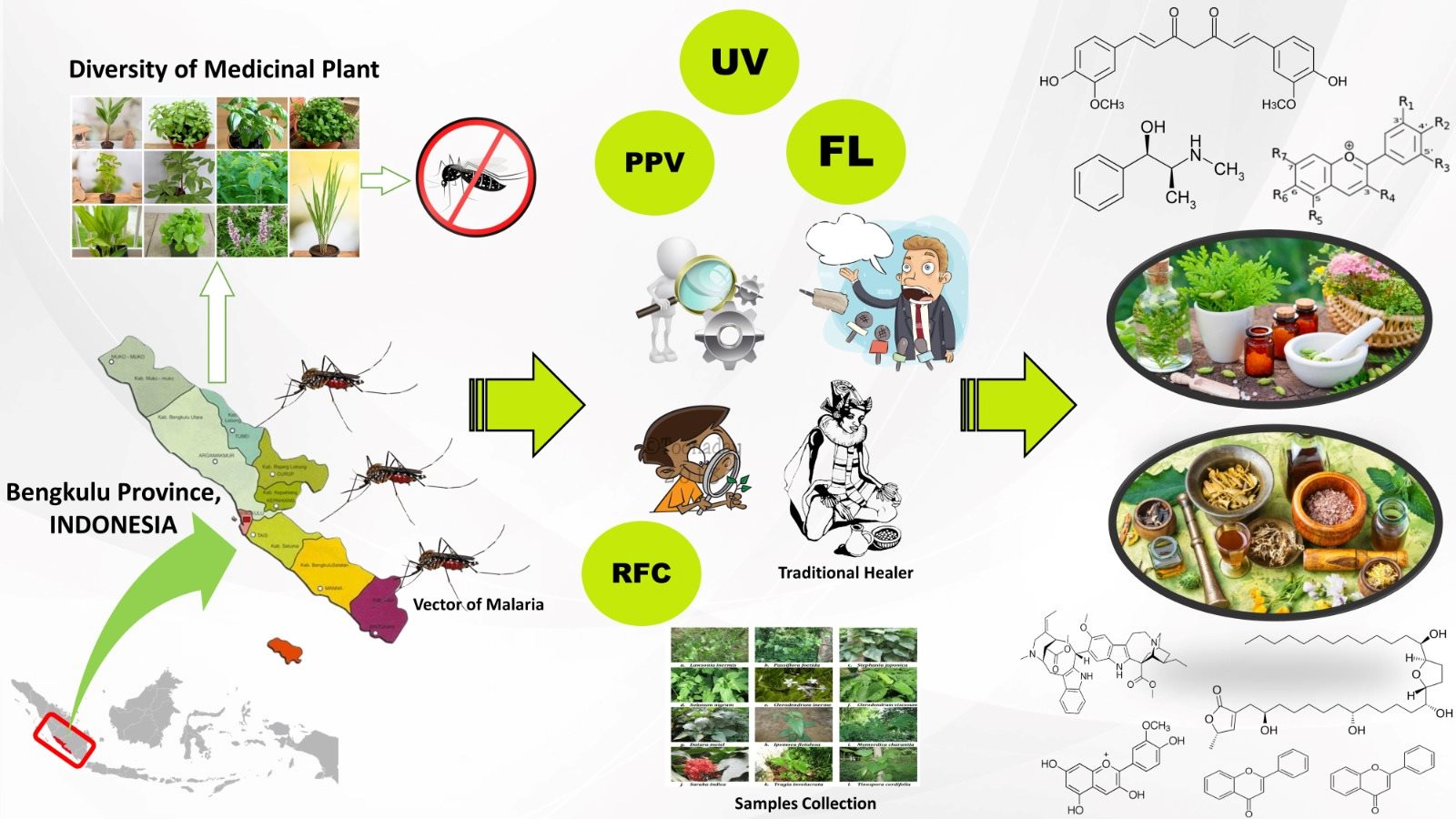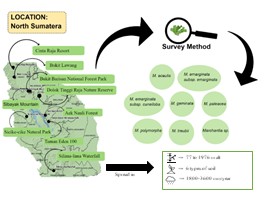TROPICAL PALMS AND FACTORS INFLUENCING THEIR DISTRIBUTIONS AND DIVERSITY, WITH A FOCUS ON Pinanga DIVERSITY IN SOUTHEAST ASIA
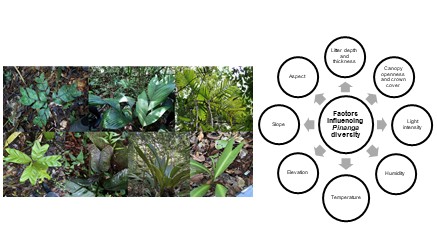
Downloads
ARTICLE HIGLIGHTS
- The palm genus Pinanga is the most diverse in Southeast Asia.
- Limited ecological studies on Pinanga show the influence of environmental factors.
- High Pinanga endemism in Borneo requires conservation action.
ABSTRACT
Palms represent some of the keystone species in tropical forests, providing numerous ecosystem services. They are widely studied by botanists because of their iconic and majestic appearance, although ecological studies of palm abundance, distributions, and diversity have only recently begun to gain attention. The abundance and diversity of palms at different spatial scales can be influenced by various factors, such as climate, soil properties, hydrology, topography and forest structure; understanding these influences is essential for conservation. This review details four abiotic factors (climate, soil chemistry, hydrology and topography) and one biotic factor (forest structure) affecting palm distribution and diversity. The genus Pinanga, one of the most diverse genera of palms, is discussed in terms of its distribution and diversity in Southeast Asia. Ecological studies on Pinanga diversity in the region are examined, revealing the influence of micro- and macro-scale variation in environmental factors, such as litter depth and thickness, canopy openness and crown cover, elevation, slope, aspect, light intensity, humidity and air temperature. The existing knowledge gaps on Pinanga ecology in Southeast Asia are discussed, and the need for more studies on population structures, functional traits and determinants of Pinanga diversity and distributions within different lowland forest types in the region are highlighted. The high endemism shown by Pinanga necessitates a more comprehensive ecological understanding of this genus to better inform its conservation and protection.
Downloads
Abdo ME. 2017. A floristic study of Halmahera, Indonesia focusing on palms (Arecaceae) and their seed dispersal [Dissertation]. Retrieved from Florida International University.
Abdullah MF. 2021. Variation in foliar nutrient contents of three Pinanga species with contrasting habitats and leaf formations [Dissertation]. Retrieved from Universiti Brunei Darussalam archive.
Abdullah MF. 2024. Differences in diversity and communities of Pinanga palms in contrasting lowland tropical forests in Brunei Darussalam, Borneo [Dissertation]. Retrieved from Universiti Brunei Darussalam archive.
Adorador JT, Meneses ZD, Fernando ES. 2020. Pinanga gruezoi (Arecaceae), a new slender clustering palm from the Philippines with notes on an amended description of P. samarana. Phytotaxa [Internet]. [cited 2022 Nov 10]; 429(2):120-34. DOI: 10.11646/phytotaxa.429.2.3 DOI: https://doi.org/10.11646/phytotaxa.429.2.3
Alvarado‐Segura AA, Calvo‐Irabién LM, Duno de Stefano R, Balslev H. 2012. Palm species richness, abundance, and diversity in the Yucatan Peninsula, in a neotropical context. Nord J Bot [Internet]. [cited 2022 Nov 10]; 30(5):613-22. DOI: 10.1111/j.1756-1051.2012.01593.x DOI: https://doi.org/10.1111/j.1756-1051.2012.01593.x
Andersen KM, Turner BL, Dalling JW. 2010. Soil-based habitat partitioning in understorey palms in lower montane tropical forests. J Biogeogr [Internet]. [cited 2022 Nov 10]; 37(2):278-92. DOI: 10.1111/j.1365-2699.2009.02192.x DOI: https://doi.org/10.1111/j.1365-2699.2009.02192.x
Ang WF, Lok AFSL, Tan HTW. 2010. Rediscovery in Singapore of Pinanga simplicifrons (Miq.) Becc. (Arecaceae). Nat Singap [Internet]. [cited 2022 Nov 18]; 3:83-6. Available from: https://lkcnhm.nus.edu.sg/app/uploads/2017/06/2010nis083-086.pdf
Astuti IW, Siswoyo S, Rustiami H. 2018. Studi Penyebaran Spasial Palem di Hutan Lindung Gunung Slamet, Jawa Tengah [Study on palm spatial distribution at Gunung Slamet Nature Forest, Central Java]. Scr biol [Internet]. [cited 2023 Jan 20]; 5(3). Available from: http://repository.ipb.ac.id/handle/123456789/61702.pdf
Bachman S, Baker WJ, Brummitt N, Dransfield J, Moat J. 2004. Elevational gradients, area, and tropical island diversity: An example from the palms of New Guinea. Ecography [Internet]. [cited 2022 Nov 10]; 27(3):299-310. DOI: 10.1111/j.0906-7590.2004.03759.x DOI: https://doi.org/10.1111/j.0906-7590.2004.03759.x
Bacon CD, Michonneau F, Henderson AJ, Mckenna MJ, Milroy AM, Simmons MP. 2013. Geographic and taxonomic disparities in species diversity: Dispersal and diversification rates across Wallace’s line. Evolution [Internet]. [cited 2022 Nov 10]; 67:2058-71. DOI: 10.1111/evo.12084 DOI: https://doi.org/10.1111/evo.12084
Baker WJ, Couvreur TL. 2012. Biogeography and distribution patterns of Southeast Asian palm. In: Gower DJ, Johnson KG, Richardson JE, Rüber L, Williams ST (Editors). Biotic Evolution and Environmental Change in Southeast Asia. New York (US): Cambridge University Press. DOI: https://doi.org/10.1017/CBO9780511735882.009
Baker WJ, Couvreur TL. 2013. Global biogeography and the diversification of palms shed light on the evolution of tropical lineages. I. Historical biogeography. J Biogeogr [Internet]. [cited 2022 Nov 10]; 40(2):274-85. DOI: 10.1111/j.1365-2699.2012.02795.x DOI: https://doi.org/10.1111/j.1365-2699.2012.02795.x
Baker WJ, Dransfield J. 2016. Beyond Genera Palmarum: Progress and prospects in palm systematics. Bot J Linn [Internet]. [cited 2022 Nov 10]; 182(2):207-33. DOI: 10.1111/boj.12401 DOI: https://doi.org/10.1111/boj.12401
Balslev H, Bernal R, Fay MF. 2016. Palms–emblems of tropical forests. Bot J Linn [Internet]. [cited 2022 Nov 10]; 182(2):195-200. DOI: 10.1111/boj.12465 DOI: https://doi.org/10.1111/boj.12465
Balslev H, Kahn F, Millan B, Svenning JC, Kristiansen T, Borchsenius F, … Eiserhardt WL. 2011. Species diversity and growth forms in tropical American palm communities. Bot Rev [Internet]. [cited 2022 Nov 10]; 77(4):381-425. DOI: 10.1007/s12229-011-9084-x DOI: https://doi.org/10.1007/s12229-011-9084-x
Balslev H, Luteyn J, Øllgaard B, Holm-Nielsen LB. 1987. Composition and structure of adjacent unflooded and floodplain forest in Amazonian Ecuador. Opera bot [Internet]. [cited 2022 Nov 10]; 92:37-57. Available from: https://www.researchgate.net/publication/284041002_Composition_and_structure_of_adjacent_unflooded_and_floodplain_forest_in_Amazonian_Ecuador.pdf
Baribault TW, Kobe RK, Finley AO. 2012. Tropical tree growth is correlated with soil phosphorus, potassium, and calcium, though not for legumes. Ecol Monogr [Internet]. [cited 2023 Jan 2]; 82(2):189-203. Available from: http://www.jstor.org/stable/41739364.pdf DOI: https://doi.org/10.1890/11-1013.1
Bellot S, Lu Y, Baker WJ, Dransfield J, Forest F, Kissling WD, … Bachman SP. 2022. The likely extinction of hundreds of palm species threatens their contributions to people and ecosystems. Nat. Ecol. Evol. [Internet]. [cited 2024 July 1]; 6(11):1710-22. DOI: 10.1038/s41559-022-01858-0 DOI: https://doi.org/10.1038/s41559-022-01858-0
Benchimol M, Talora DC, Mariano-Neto E, Oliveira TL, Leal A, Mielke MS, Faria D. 2017. Losing our palms: The influence of landscape-scale deforestation on Arecaceae diversity in the Atlantic forest. For Ecol Manag [Internet]. [cited 2023 Jan 2]; 384:314-22. DOI: 10.1016/j.foreco.2016.11.014 DOI: https://doi.org/10.1016/j.foreco.2016.11.014
Bjorholm S, Svenning JC, Baker WJ, Skov F, Balslev H. 2006. Historical legacies in the geographical diversity patterns of New World palm (Arecaceae) subfamilies. Bot J Linn [Internet]. [cited 2022 Nov 10]; 151(1):113-25. DOI: 10.1111/j.1095-8339.2006.00527.x DOI: https://doi.org/10.1111/j.1095-8339.2006.00527.x
Bjorholm S, Svenning JC, Skov F, Balslev H. 2005. Environmental and spatial controls of palm (Arecaceae) species richness across the Americas. Glob Ecol Biogeogr [Internet]. [cited 2022 Nov 10]; 14(5):423-9. DOI: 10.1111/j.1466-822x.2005.00167.x DOI: https://doi.org/10.1111/j.1466-822x.2005.00167.x
Blach‐Overgaard A, Svenning JC, Dransfield J, Greve M, Balslev H. 2010. Determinants of palm species distributions across Africa: The relative roles of climate, non‐climatic environmental factors, and spatial constraints. Ecography [Internet]. [cited 2022 Nov 10]; 33(2):380-91. DOI: 10.1111/j.1600-0587.2010.06273.x DOI: https://doi.org/10.1111/j.1600-0587.2010.06273.x
Bogota-Angel G, Huang H, Jardine PE, Chazot N, Salamanca S, Banks H, Hoorn C. 2021. Climate and geological change as drivers of Mauritiinae palm biogeography. J Biogeogr [Internet]. [cited 2022 Nov 10]; 48(5):1001-22. DOI: 10.1111/jbi.14098 DOI: https://doi.org/10.1111/jbi.14098
Bonetti S, Feng X, Porporato A. 2017. Ecohydrological controls on plant diversity in tropical South America: Ecohydrological controls on plant diversity. Ecohydrol [Internet]. [cited 2022 Nov 10]; 10:e1853. DOI: 10.1002/eco.1853 DOI: https://doi.org/10.1002/eco.1853
Boukili VK, Chazdon RL. 2017. Environmental filtering, local site factors, and landscape context drive changes in functional trait composition during tropical forest succession. PPEES [Internet]. [cited 2023 Dec 7]; 24:37-47. DOI: 10.1016/j.ppees.2016.11.003 DOI: https://doi.org/10.1016/j.ppees.2016.11.003
Browne L, Karubian J. 2016. Diversity of palm communities at different spatial scales in a recently fragmented tropical landscape. Bot J Linn 182 [Internet]. [cited 2022 Nov 10]; (2):451-64. DOI: 10.1111/boj.12384 DOI: https://doi.org/10.1111/boj.12384
Cámara-Leret R, Faurby S, Macía MJ, Balslev H, Göldel B, Svenning JC, … Saslis-Lagoudakis CH. 2017a. Fundamental species traits explain the provisioning services of tropical American palms. Nat Plants [Internet]. [cited 2022 Nov 10]; 3(2):1-7. DOI: 10.1038/nplants.2016.220 DOI: https://doi.org/10.1038/nplants.2016.220
Cámara‐Leret R, Tuomisto H, Ruokolainen K, Balslev H, Munch Kristiansen S. 2017b. Modelling responses of western Amazonian palms to soil nutrients. J Ecol [Internet]. [cited 2022 Nov 10]; 105(2):367-81. DOI: 10.1111/1365-2745.12708 DOI: https://doi.org/10.1111/1365-2745.12708
Carson W, Schnitzer S (Editors). 2011. Tropical Forest Community Ecology. New York (US): Wiley-Blackwell.
Cintra R, Ximenes ADC, Gondim FR, Kropf MS. 2005. Forest spatial heterogeneity and palm richness, abundance and community composition in Terra Firme forest, Central Amazon. Rev Bras Bot [Internet]. [cited 2022 Nov 10]; 28:75-84. DOI: 10.1590/S0100-84042005000100007 DOI: https://doi.org/10.1590/S0100-84042005000100007
Condit R, Engelbrecht BM, Pino D, Pérez R, Turner BL. 2013. Species distributions in response to individual soil nutrients and seasonal drought across a community of tropical trees. PNAS [Internet]. [cited 2022 Nov 10]; 110(13):5064-8. DOI: 10.1073/pnas.1218042110 DOI: https://doi.org/10.1073/pnas.1218042110
Coode MJE, Kirkup DW, Dransfield J, Forman LL, Said IM. 1996. A checklist of the flowering plants and gymnosperms of Brunei Darussalam. Bandar Seri Begawan (BN): Ministry of Industry and Primary Resources.
Couvreur TL, Baker WJ. 2013. Tropical rain forest evolution: Palms as a model group. BMC Biology [Internet]. [cited 2022 Nov 10]; 11(1):1-4. DOI: 10.1186/1741-7007-11-48 DOI: https://doi.org/10.1186/1741-7007-11-48
Dalling JW, Heineman K, González G, Ostertag R. 2016. Geographic, environmental, and biotic sources of variation in the nutrient relations of tropical montane forests. J Trop Ecol [Internet]. [cited 2022 Nov 10]; 32(5):368-83. DOI: 10.1017/S0266467415000619 DOI: https://doi.org/10.1017/S0266467415000619
Dransfield J, Uhl NW, Asmussen CB, Baker WJ, Harley MM, Lewis CE. 2008. Genera Palmarum: The Evolution and Classification of Palms. London (UK): Kew Royal Botanic Gardens.
Dransfield J. 1980. Systematic notes on Pinanga (Palmae) in Borneo. Kew Bulletin [Internet]. [cited 2024 June 10]; 769-788. DOI: 10.2307/4119070 DOI: https://doi.org/10.2307/4119070
Dransfield J. 1991. Notes on Pinanga (Palmae) in Sarawak. Kew Bulletin [Internet]. [cited 2024 June 10]; 691-8. DOI: 10.2307/4110412 DOI: https://doi.org/10.2307/4110412
Eiserhardt WL, Svenning JC, Kissling WD, Balslev H. 2011. Geographical ecology of the palms (Arecaceae): Determinants of diversity and distributions across spatial scales. Ann Bot [Internet]. [cited 2022 Nov 10]; 108(8):1391-416. DOI: 10.1093/aob/mcr146 DOI: https://doi.org/10.1093/aob/mcr146
Elias GA, Gasper AL, Lima JMT, Soares KP, Molz M, Santos R. 2016. Community structure of large native arborescent palms (Arecaceae) using data from the Floristic and Forest Inventory of Santa Catarina, Brazil. Int J Basic Appl Sci [Internet]. [cited 2022 Dec 7]; 10(10):156-63. DOI: 10.13140/RG.2.2.32588.21124
Elias GA, Giehl ELH, De Gasper AL, Lima JMT, Dos Santos R. 2019. Low-temperature extremes influence both the presence of palms and palm species richness in the Atlantic Forest, Southern Brazil. Ecol Austral [Internet]. [cited 2022 Dec 7]; 29(1):041-9. Available from: https://www.academia.edu/82650348/Low_temperature_extremes_influence_both_the_presence_of_palms_and_palm_species_richness_in_the_Atlantic_Forest_Southern_Brazil?f_ri=377014.pdf DOI: https://doi.org/10.25260/EA.19.29.1.0.737
Emilio T, Quesada CA, Costa FR, Magnusson WE, Schietti J, Feldpausch TR, Phillips OL. 2014. Soil physical conditions limit palm and tree basal areas in Amazonian forests. Plant Ecol Divers [Internet]. [cited 2022 Dec 7]; 7(1-2):215-29. DOI: 10.1080/17550874.2013.772257 DOI: https://doi.org/10.1080/17550874.2013.772257
Fernando ES, Logatoc ELR, Malabrigo PLJr, Adorador JT. 2020. Pinanga lepidota (Arecaceae: Arecoideae), a new record for the Philippines from Palawan Island. Philipp J Syst Biol [Internet]. [cited 2022 Nov 18]; 14(3):1-6. Available from: https://10.26757/pjsb2020c14005 DOI: https://doi.org/10.26757/pjsb2020c14005
Gatti MG, Campanello PI, Montti LF, Goldstein G. 2008. Frost resistance in the tropical palm Euterpe edulis and its pattern of distribution in the Atlantic Forest of Argentina. For Ecol Manag [Internet]. [cited 2022 Nov 10]; 256(4):633-40. DOI: 10.1016/j.foreco.2008.05.012 DOI: https://doi.org/10.1016/j.foreco.2008.05.012
Göldel B, Kissling WD, Svenning JC. 2015. Geographical variation and environmental correlates of functional trait distributions in palms (Arecaceae) across the New World. Bot J Linn [Internet]. [cited 2022 Dec 20]; 179(4):602-17. DOI: 10.1111/boj.12349 DOI: https://doi.org/10.1111/boj.12349
Goodman RC, Phillips OL, del Castillo Torres D, Freitas L, Cortese ST, Monteagudo A, Baker TR. 2013. Amazon palm biomass and allometry. For Ecol Manag [Internet]. [cited 2022 Nov 10]; 310:994-1004. DOI: 10.1016/j.foreco.2013.09.045 DOI: https://doi.org/10.1016/j.foreco.2013.09.045
Govaerts R, Dransfield J, Zona S, Hodel DR, Henderson A. 2020. World Checklist of Arecaceae. Facilitated by the Royal Botanic Gardens, Kew [Internet]. [cited 2022 Nov 10]. Available from: http://apps.kew. org/wcsp/
Haji Ramlan NS. 2020. The influence of soil properties on Pinanga palms at two contrasting Mixed Dipterocarp forests in Brunei Darussalam [Dissertation]. Retrieved from Universiti Brunei Darussalam archive.
Hawkins B, Field R, Cornell H, Currie D. 2003. Energy, water, and broad-scale geographic patterns of species richness. Ecology [Internet]. [cited 2022 Nov 10]; 84:3105-17. DOI: 10.1890/03-8006 DOI: https://doi.org/10.1890/03-8006
Henderson A, Ban NK, Thanh BV. 2010. New species of Areca, Pinanga and Licuala (Arecaceae) from Vietnam. Phytotaxa [Internet]. [cited 2023 Feb 1]; 8(1):34-40. DOI: 10.11646/phytotaxa.8.1.3 DOI: https://doi.org/10.11646/phytotaxa.8.1.3
Henderson A, Galeano G, Bernal R. 2019. A Field Guide to the Palms of the Americas (Vol. 5390). New Jersey (US): Princeton University Press. DOI: https://doi.org/10.1515/9780691197708
Henderson A, Dung NQ. 2017. New species of Lanonia, Licuala and Pinanga (Arecaceae) from Vietnam. Phytotaxa [Internet]. [cited 2023 Feb 1]; 323(2):159-72. DOI: 10.11646/phytotaxa.323.2.4 DOI: https://doi.org/10.11646/phytotaxa.323.2.4
Hilário RR, Toledo JJ. 2016. Effects of climate and forest structure on palms, bromeliads and bamboos in Atlantic Forest fragments of Northeastern Brazil. Braz J Biol [Internet]. [cited 2022 Nov 10]; 76:834-44. DOI: 10.1590/1519-6984.00815 DOI: https://doi.org/10.1590/1519-6984.00815
Iryadi R, Sutomo S. 2020. Autecology of an endemic palm Pinanga arinasae JR Witono in Bali, Indonesia. J Trop Biodiv Biotech [Internet]. [cited 2022 Nov 18]; 5(2):108-14. DOI: 10.22146/jtbb.54650 DOI: https://doi.org/10.22146/jtbb.54650
IUCN. 2024. The IUCN Red List of Threatened Species. Version 2024-1 [Internet]. [cited 2024 July 1]. Available from: https://www.iucnredlist.org/
John R, Dalling JW, Harms KE, Yavitt JB, Stallard RF, Mirabello M, … Foster RB. 2007. Soil nutrients influence the spatial distributions of tropical tree species. PNAS [Internet]. [cited 2022 Nov 10]; 104:864-9. DOI: 10.1073/pnas.0604666104 DOI: https://doi.org/10.1073/pnas.0604666104
Kahn F, de Castro A. 1985. The palm community in a forest of central Amazonia, Brazil. Biotropica [Internet]. [cited 2022 Nov 10]; 210-6. DOI: 10.2307/2388221 DOI: https://doi.org/10.2307/2388221
Kahn F. 1987. The distribution of palms as a function of local topography in Amazonian terra-firme forests. Experientia Basel [Internet]. [cited 2022 Nov 10]; 43(3):251-8. DOI: 10.1007/BF01945548 DOI: https://doi.org/10.1007/BF01945548
Keat LC, Dransfield J, Kiew R, Guan SL. 1998. Four new Pinanga Blume (Palmae) species from Peninsular Malaysia. Gardens’ Bulletin Singapore [Internet]. [cited 2024 June 10]; 50:99-114. Available from: https://www.nparks.gov.sg/sbg/research/publications/gardens-bulletin-singapore/-/media/sbg/gardens-bulletin/4-4-50-1-10-y1998-v50p1-gbs-pg-99.pdf
Kissling WD, Balslev H, Baker WJ, Dransfield J, Göldel B, Lim JY, … Svenning JC. 2019. PalmTraits 1.0, a species-level functional trait database of palms worldwide. Sci Data [Internet]. [cited 2022 Nov 10]; 6(1):1-13. DOI: 10.1038/s41597-019-0189-0 DOI: https://doi.org/10.1038/s41597-019-0189-0
Kissling WD, Eiserhardt WL, Baker WJ, Borchsenius F, Couvreur TL, Balslev H, Svenning JC. 2012. Cenozoic imprints on the phylogenetic structure of palm species assemblages worldwide. PNAS [Internet]. [cited 2022 Nov 10]; 109(19):7379-84. DOI: 10.1073/pnas.1120467109 DOI: https://doi.org/10.1073/pnas.1120467109
Kreft H, Jetz W. 2007. Global patterns and determinants of vascular plant diversity. PNAS [Internet]. [cited 2022 Nov 10]; 104(14):5925-30. DOI: 10.1073/pnas.0608361104 DOI: https://doi.org/10.1073/pnas.0608361104
Kreft H, Sommer JH, Barthlott W. 2006. The significance of geographic range size for spatial diversity patterns in Neotropical palms. Ecography [Internet]. [cited 2022 Nov 10]; 29(1):21-30. DOI: 10.1111/j.2005.0906-7590.04203.x DOI: https://doi.org/10.1111/j.2005.0906-7590.04203.x
Kristiansen T, Svenning JC, Eiserhardt WL, Pedersen D, Brix H, Munch Kristiansen S, … Balslev H. 2012. Environment versus dispersal in the assembly of western Amazonian palm communities. J Biogeogr [Internet]. [cited 2022 Nov 10]; 39(7):1318-32. DOI: 10.1111/j.1365-2699.2012.02689.x DOI: https://doi.org/10.1111/j.1365-2699.2012.02689.x
Kristiansen T, Svenning JC, Pedersen D, Eiserhardt WL, Grández C, Balslev H. 2011. Local and regional palm (Arecaceae) species richness patterns and their cross‐scale determinants in the western Amazon. J Ecol [Internet]. [cited 2022 Nov 10]; 99(4):1001-15. DOI: 10.1111/j.1365-2745.2011.01834.x DOI: https://doi.org/10.1111/j.1365-2745.2011.01834.x
Kuhnhäuser BG, Randi A, Petoe P, Chai PP, Bellot S, Baker WJ. 2023. Hiding in plain sight: The underground palm Pinanga subterranea. Plants, People, Planet [Internet]. [cited 2024 June 10]; 5(6), 815-20. DOI: 10.1002/ppp3.10393 DOI: https://doi.org/10.1002/ppp3.10393
Levis C, Costa FR, Bongers F, Peña-Claros M, Clement CR, Junqueira AB, Sandoval EV. 2017. Persistent effects of pre-Columbian plant domestication on Amazonian forest composition. Sci [Internet]. [cited 2022 Dec 7]; 355(6328):925-31. DOI: 10.1126/science.aal0157 DOI: https://doi.org/10.1126/science.aal0157
Lieberman D, Lieberman M, Peralta R, Hartshorn GS. 1996. Tropical forest structure and composition on a large-scale altitudinal gradient in Costa Rica. J Ecol [Internet]. [cited 2022 Nov 10];137-52. DOI: 10.2307/2261350 DOI: https://doi.org/10.2307/2261350
Lim J, Chong R, Chia Z, Jinying T, Foong AW. 2022. Biodiversity Record: New locality record for the palm, Pinanga simplicifrons, in Singapore. Nat Singap [Internet]. [cited 2023 Feb 1]; 15:e2022042. Available from: https://lkcnhm.nus.edu.sg/wpcontent/uploads/sites/10/2022/04/NIS-2022-0043.pdf
Limin A, Slik F, Sukri RS, Chen SB, Ahmad JA. 2022. Large tree species composition, not growth rates, is affected by topography in a Bornean tropical forest. Biotropica [Internet]. [cited 2023 Apr 20]; 53(5):1290-300. DOI: 10.1111/btp.12969 DOI: https://doi.org/10.1111/btp.12969
Loo AHB, Ang WF, Baker WJ, Tan HTW. 2014. A Guide to the Native Palms of Singapore. Singapore (SG): Singapore Science Centre.
Lueder S. 2020. Palm community diversity and composition in a tropical human-modified landscape [Dissertation]. Retrieved from Tulane University.
Macedo-Santana F, Flores-Tolentino M, Hernández-Guzmán R. 2021. Diversity patterns of palms in Mexico using species distribution models. Écoscience [Internet]. [cited 2022 Nov 10]; 28(2):137-47. DOI: 10.1080/11956860.2021.1888522 DOI: https://doi.org/10.1080/11956860.2021.1888522
Mainasara MM, Bakar MA, Linatoc AC. 2019. Cytotoxic activities of Pinanga limosa (Pinang Puteri) from Endau Rompin Johor, Malaysia. In: IOP Conference Series: Earth and Environmental Science. 11-13 November 2018. DOI: https://doi.org/10.1088/1755-1315/269/1/012027
Manggat MA. 2012. Influence of altitude on distribution of native palm species: A case study at Gunung Jagoi, Bau, Sarawak [Dissertation]. Retrieved from Universiti Malaysia Sarawak.
Martins RC, Filgueiras TDS, Albuquerque UP. 2014. Use and diversity of palm (Arecaceae) resources in central-western Brazil. Sci World J [Internet]. [cited 2023 Feb 2]; 2014. DOI: 10.1155/2014/942043 DOI: https://doi.org/10.1155/2014/942043
Mehmud S, Roy H. 2021. Diversity and distribution of palms (Arecaceae) in Assam, India. Check List [Internet]. [cited 2023 Feb 2]; 17(1):69-93. DOI: 10.15560/17.1.69 DOI: https://doi.org/10.15560/17.1.69
Moeslund JE, Arge L, Bøcher PK, Dalgaard T, Svenning JC. 2013. Topography as a driver of local terrestrial vascular plant diversity patterns. Nord J Bot [Internet]. [cited 2023 Feb 2]; 31(2):129-44. DOI: 10.1111/j.1756-1051.2013.00082.x DOI: https://doi.org/10.1111/j.1756-1051.2013.00082.x
Montoya F, Mónica MR, Fuentes AF, Cayola L, Antezana A, Miranda T, … Tello JS. 2021. Relative effects of edaphic conditions and climate on palm communities in the Central Andes. bioRxiv [Internet]. [cited 2022 Nov 10]. DOI: 10.1101/2021.03.08.434423 DOI: https://doi.org/10.1101/2021.03.08.434423
Montúfar R, Anthelme F, Pintaud JC, Balslev H. 2011. Disturbance and resilience in tropical American palm populations and communities. Bot Rev [Internet]. [cited 2022 Nov 10]; 77:426-61. DOI: 10.1007/s12229-011-9085-9 DOI: https://doi.org/10.1007/s12229-011-9085-9
Montúfar R, Pintaud JC. 2006. Variation in species composition, abundance, and microhabitat preferences among western Amazonian terra firme palm communities. Biol J Linn Soc [Internet]. [cited 2022 Nov 10]; 151(1):127-40. DOI: 10.1111/j.1095-8339.2006.00528.x DOI: https://doi.org/10.1111/j.1095-8339.2006.00528.x
Mooney M. 2020. Landscape distribution of Pinanga palm (Arecaceae) species in Brunei Darussalam [Dissertation]. Retrieved from The University of the Sunshine Coast.
Moraes MR, Ríos-Uzeda B, Moreno LR, Huanca-Huarachi G, Larrea-Alcázar D. 2014. Using potential distribution models for patterns of species richness, endemism, and phytogeography of palm species in Bolivia. Trop Conserv Sci [Internet]. [cited 2022 Nov 10]; 7(1):45-60. DOI: 10.1177/194008291400700109 DOI: https://doi.org/10.1177/194008291400700109
Muscarella R, Emilio T, Phillips OL, Lewis SL, Slik F, Baker WJ, Poedjirahajoe E. 2020. The global abundance of tree palms. Glob Ecol Biogeogr [Internet]. [cited 2022 Nov 10]; 29(9):1495-514. DOI: 10.1111/geb.13123 DOI: https://doi.org/10.1111/geb.13123
Normand S, Vormisto J, Svenning JC, Grandez C, Balslev H. 2006. Geographical and environmental controls of palm beta diversity in paleo-riverine terrace forests in Amazonian Peru. Plant Ecol [Internet]. [cited 2022 Nov 10]; 186(2):161-76. DOI: 10.1007/s11258-006-9120-9 DOI: https://doi.org/10.1007/s11258-006-9120-9
Odufuwa P. 2019. DNA barcoding of Pinanga (Arecaceae) of Borneo [Dissertation]. Retrieved from The University of London.
Onstein RE, Baker WJ, Couvreur TL, Faurby S, Svenning JC, Kissling WD. 2017. Frugivory-related traits promote the speciation of tropical palms. Nat Ecol Evol [Internet]. [cited 2022 Nov 10]; 1(12):1903-11. DOI: 10.1038/s41559-017-0348-7 DOI: https://doi.org/10.1038/s41559-017-0348-7
Pasion BO, Duya MRM, Ong PS, Fernando ES. 2022. Twelve-year changes in palm populations from a tropical lowland forest in the Philippines. Community Ecol [Internet]. [cited 2023 Feb 2]; 23:327-35. DOI: 10.1007/s42974-022-00109-3 DOI: https://doi.org/10.1007/s42974-022-00109-3
Pearson RG, Dawson TP. 2003. Predicting the impacts of climate change on the distribution of species: are bioclimate envelope models useful? Glob Ecol Biogeogr [Internet]. [cited 2022 Nov 10]; 12(5):361-71. DOI: 10.1046/j.1466-822X.2003.00042.x DOI: https://doi.org/10.1046/j.1466-822X.2003.00042.x
Poulsen AD, Tuomisto H, Balslev H. 2006. Edaphic and floristic variation within a 1‐ha plot of lowland Amazonian rain forest 1. Biotropica [Internet]. [cited 2022 Nov 10]; 38(4):468-78. DOI: 10.1111/j.1744-7429.2006.00168.x DOI: https://doi.org/10.1111/j.1744-7429.2006.00168.x
POWO. 2024. Plants of the World Online. Facilitated by the Royal Botanic Gardens, Kew. [Internet]. [cited 2024 July 1]; Available from: http://www.plantsoftheworldonline.org/
Randi A, Hikmat A, Heatubun CD. 2019. Pinanga schwanerensis, a new species of Pinanga (Arecaceae) from Kalimantan, Indonesia. Phytotaxa [Internet]. [cited 2022 Nov 18]; 402(2):121-5. DOI: 10.11646/phytotaxa.402.2.6 DOI: https://doi.org/10.11646/phytotaxa.402.2.6
Reichgelt T, West CK, Greenwood DR. 2018. The relation between global palm distribution and climate. Scientific Reports [Internet]. [cited 2023 Feb 2]; 8(1):1-11. DOI: 10.1038/s41598-018-23147-2 DOI: https://doi.org/10.1038/s41598-018-23147-2
Renninger HJ, Phillips NG. 2016. Palm physiology and distribution in response to global environmental change. In: Goldstein G, Santiago LS (Editors). Tropical Tree Physiology Vol. 6. Cham (CH): Springer International Publishing DOI: https://doi.org/10.1007/978-3-319-27422-5_4
Rodrigues LF, Cintra R, Castilho CV, de Sousa Pereira O, Pimentel TP. 2014. Influences of forest structure and landscape features on spatial variation in species composition in a palm community in central Amazonia. J Trop Ecol [Internet]. [cited 2023 Feb 2]; 30(6):565-78. DOI: 10.1371/journal.pone.0171540 DOI: https://doi.org/10.1017/S0266467414000431
Ruokolainen K, Vormisto J. 2000. The most widespread Amazonian palms tend to be tall and habitat generalists. Appl Soil Ecol [Internet]. [cited 2022 Nov 10]; 1(2):97-108. DOI: 10.1078/1439-1791-00020 DOI: https://doi.org/10.1078/1439-1791-00020
Salm R, Prates A, Simoes NR, Feder L. 2015. Palm community transitions along a topographic gradient from floodplain to terra firme in the eastern Amazon. Acta amazônica [Internet]. [cited 2022 Nov 10]; 45:65-74. DOI: 10.1590/1809-4392201401533 DOI: https://doi.org/10.1590/1809-4392201401533
Salm R, Salles NVD, Alonso WJ, Schuck-Paim C. 2007. Cross-scale determinants of palm species distribution. Acta amazónica [Internet]. [cited 2022 Nov 10]; 37(1):17-25. DOI: 10.1590/S0044-59672007000100002 DOI: https://doi.org/10.1590/S0044-59672007000100002
Sanders NJ, Rahbek C. 2012. The patterns and causes of elevational diversity gradients. Ecography [Internet]. [cited 2022 Nov 10]; 35(1):1. DOI: 10.2307/41406206 DOI: https://doi.org/10.1111/j.1600-0587.2011.07338.x
Scariot AO. 2015. Palmeiras brasileiras: botânica, ecologia, usos e conservação. In: Lopes R, Oliveira MSP, Cavallari MM, Barbieri RL, Conceição LDHCS (Editors). Palmeiras nativas do Brasil. Brasília (BR): Embrapa. p. 15-33.
Sevegnani LA, Uhlmann AL, Gasper L, Meyer L, Vibrans AC. 2016. Climate affects the structure of mixed rain forests in the southern sector of the Atlantic domain in Brazil. Acta Oecologica [Internet]. [cited 2023 Feb 2]; 77:109-77. DOI: 10.1016/j.actao.2016.10.002 DOI: https://doi.org/10.1016/j.actao.2016.10.002
Shapcott A, Slik F, Rosli R, Sukri RS. 2022. Pinanga palms revisited 20 years on: what can changes in Pinanga species populations tell us about rainforest understory palm persistence? J Trop Ecol [Internet]. [cited 2023 Feb 2]; 38(6):351-61. DOI: 10.1017/S0266467422000256 DOI: https://doi.org/10.1017/S0266467422000256
Shapcott A. 1999. Comparison of the population genetics and densities of five Pinanga palm species at Kuala Belalong, Brunei. Mol Ecol [Internet]. [cited 2022 Nov 18]; 8(10):1641-54. DOI: 10.1046/j.1365-294x.1999.00749.x DOI: https://doi.org/10.1046/j.1365-294x.1999.00749.x
Siebert SF. 2005. The abundance and distribution of rattan over an elevation gradient in Sulawesi, Indonesia. For Ecol Manag [Internet]. [cited 2022 Nov 10]; 210(1-3):143-58. DOI: 10.1016/j.foreco.2005.02.015 DOI: https://doi.org/10.1016/j.foreco.2005.02.015
Sørensen MV. 2012. Determinants of the distribution ranges of eleven economically important palm species in western South America [Dissertation]. Retrieved from Aarhus University.
Sukri RS, Wahab RA, Salim KA, Burslem DF. 2012. Habitat associations and community structure of dipterocarps in response to environment and soil conditions in Brunei Darussalam, Northwest Borneo. Biotropica [Internet]. [cited 2023 Apr 20]; 44(5):595-605. DOI: 10.1111/j.1744-7429.2011.00837.x DOI: https://doi.org/10.1111/j.1744-7429.2011.00837.x
Sutomo S, Darma IDP, Sujarwo W, Priyadi A, Kuswantoto F, Iryadi R. 2018. Ecology of Bedugul Basin Bali. Bogor (ID): SEAMEO BIOTROP.
Svenning JC, Borchsenius F, Bjorholm S, Balslev H. 2008. High tropical net diversification drives the New World latitudinal gradient in the palm (Arecaceae) species richness. J Biogeogr [Internet]. [cited 2022 Nov 10]; 35(3):394-406. DOI: 10.1111/j.1365-2699.2007.01841.x DOI: https://doi.org/10.1111/j.1365-2699.2007.01841.x
Svenning JC. 1999. Microhabitat specialization in a species‐rich palm community in Amazonian Ecuador. J Ecol [Internet]. [cited 2022 Nov 10]; 87(1):55-65. DOI: 10.1046/j.1365-2745.1999.00329.x DOI: https://doi.org/10.1046/j.1365-2745.1999.00329.x
Svenning JC. 2000. Growth strategies of clonal palms (Arecaceae) in a neotropical rainforest, Yasuni, Ecuador. Aust J Bot [Internet]. [cited 2022 Nov 10]; 48(2):167-78. DOI: 10.1071/BT98048 DOI: https://doi.org/10.1071/BT98048
Svenning JC. 2001. On the role of microenvironmental heterogeneity in the ecology and diversification of neotropical rain-forest palms (Arecaceae). Bot Rev [Internet]. [cited 2022 Nov 10]; 67(1):1-53. DOI: 10.1007/BF02857848 DOI: https://doi.org/10.1007/BF02857848
Syahida-Emiza S, Syazwani A, Rafidah AR, Nor-Ezzawanis AT, Ummul-Nazrah AR. 2018. Heart of Borneo: Exploring the beauty of Long Banga. Conservation Malaysia [Internet]. [cited 2022 Nov 18]. Available from https://www.mybis.gov.my/pd/283.pdf
Syauqina MY, Meekiong K, Aimi Syazana S, Miraadila MI. 2017. Diversity of palms in Dered Krian National Park, Bau. In: Meekiong K, Azahari O, Pungga RS, Wasli ME, Freddy YKS, Marconi SJ (Editors). Proceedings of Colloquium on the Dered Krian National Park-Scientific Expedition 2016. Kuching, Sarawak. p. 15-9.
Thonhofer J, Getto D, van Straaten O, Cicuzza D, Kessler M. 2015. Influence of spatial and environmental variables on rattan palm (Arecaceae) assemblage composition in Central Sulawesi, Indonesia. Plant Ecol [Internet]. [cited 2022 Nov 10]; 216(1):55-66. DOI: 10.1007/s11258-014-0416-x DOI: https://doi.org/10.1007/s11258-014-0416-x
Viana JL, Turner BL, Dalling JW. 2021. Compositional variation in understorey fern and palm communities along a soil fertility and rainfall gradient in a lower montane tropical forest. J Veg Sci [Internet]. [cited 2023 Feb 5]; 32(1):e12947. DOI: 10.1111/jvs.12947 DOI: https://doi.org/10.1111/jvs.12947
Vormisto J, Svenning JC, Hall P, Balslev H. 2004. Diversity and dominance in the palm (Arecaceae) communities in terra firme forests in the western Amazon basin. J Ecol [Internet]. [cited 2022 Nov 10]; 92(4):577-88. DOI: 10.1111/j.0022-0477.2004.00904.x DOI: https://doi.org/10.1111/j.0022-0477.2004.00904.x
Wahyuni AS, Prasetyo LB, Zuhud EA. 2017. Population and distribution plant pattern Paliasa (Kleinhovia hospita L.) in Bontobahari District. Media Konservasi [Internet]. [cited 2023 Feb 7]; 22(1):11-8. DOI: 10.29244/medkon.22.1.11-18
Wang B, Zhang G, Duan J. 2015. Relationship between topography and the distribution of understory vegetation in a Pinus massoniana forest in Southern China. ISWCR [Internet]. [cited 2023 Feb 2]; 3(4):291-304. DOI: 10.1016/j.iswcr.2015.10.002 DOI: https://doi.org/10.1016/j.iswcr.2015.10.002
Witono JR, Mogea JP, Somadikarta S. 2002. Pinanga in Java and Bali. Palms [Internet]. [cited 2022 Nov 18] 46:193-201. Available from: https://www.academia.edu/24062744/Pinanga_in_Java_and_Bali.pdf
Yudaputra A, Rahardjo P. 2020. Short Communication: Plant species richness and diversity in Karangsambung-Karangbolong National Geopark, Indonesia. Biodiversitas [Internet]. [cited 2022 Nov 10]; 21(4):1735-42. DOI: 10.13057/biodiv/d210457 DOI: https://doi.org/10.13057/biodiv/d210457
Yudaputra A, Witono JR, Astuti IP, Munawaroh E, Fijridiyanto IA, Zulkarnaen RN, … Cropper WP. 2021. Habitat suitability, population structure and conservation status of Pinanga arinasae (Arecaceae), an endemic palm in Bali Island, Indonesia. Diversity [Internet]. [cited 2022 Nov 18]; 14(1):10. DOI: 10.3390/d14010010 DOI: https://doi.org/10.3390/d14010010
Zulkarnaen RN, Helmanto H, Wihermanto W, Primananda E, Robiansyah I, Kusuma YWC. 2022a. Population study of endemic Java palm Pinanga javana in Mount Ungaran, Semarang, Central Java, Indonesia. Biosaintifika: J Biol Educ [Internet]. [cited 2022 Nov 18]; 14(1):48-56. DOI: 10.15294/biosaintifika.v14i1.35230 DOI: https://doi.org/10.15294/biosaintifika.v14i1.35230
Zulkarnaen RN, Helmanto H, Fikriyya N, Witono JR. 2022b. Palm species diversity on Mount Slamet, Central Java, Indonesia. In: IOP Conference Series: Earth and Environmental Science (Vol. 976, No. 1, p. 012048). IOP Publishing. DOI: https://doi.org/10.1088/1755-1315/976/1/012048
Zulkarnaen RN, Nisyawati N, Witono JR. 2019. Population study and habitat preferences of Pinang Jawa (Pinanga javana) in Mt. Slamet, Central Java, Indonesia. Biodiversitas [Internet]. [cited 2022 Nov 18]; 20(3):712-8. DOI: 10.13057/biodiv/d200314 DOI: https://doi.org/10.13057/biodiv/d200314
Zulkarnaen RN, Nisyawati N, Witono JR. 2020. The growth and distribution pattern of endemic Java palm (Pinanga javana Blume) in Mt. Slamet, Central Java, Indonesia. In: AIP Conference Proceedings (Vol. 2231, No. 1). AIP Publishing. DOI: https://doi.org/10.1063/5.0002814
Copyright (c) 2024 Mohamad Farid Abdullah, Salwana Md Jaafar, Norhayati Ahmad, Rahayu Sukmaria Sukri

This work is licensed under a Creative Commons Attribution-NonCommercial-NoDerivatives 4.0 International License.
Authors who publish with this journal agree with the following terms:
- Authors retain copyright and grant the journal right of first publication, with the work 1 year after publication simultaneously licensed under a Creative Commons attribution-noncommerical-noderivates 4.0 International License that allows others to share, copy and redistribute the work in any medium or format, but only where the use is for non-commercial purposes and an acknowledgement of the work's authorship and initial publication in this journal is mentioned.
- Authors are able to enter into separate, additional contractual arrangements for the non-exclusive distribution of the journal's published version of the work (e.g., post it to an institutional repository or publish it in a book), with an acknowledgement of its initial publication in this journal.
- Authors are permitted and encouraged to post their work online (e.g., in institutional repositories or on their website) prior to and during the submission process, as it can lead to productive exchanges, as well as earlier and greater citation of published work (See The Effect of Open Access).









